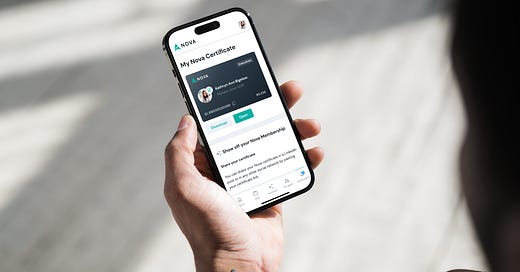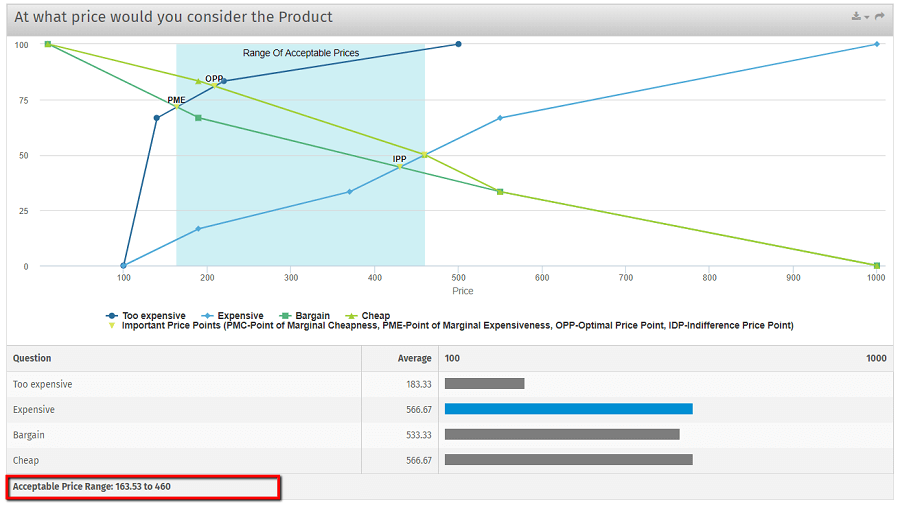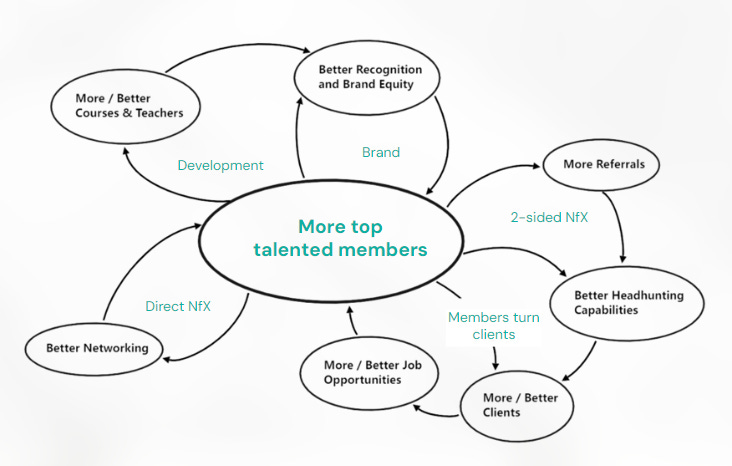Turning Nova into a paid membership (2/2)
Why and how we turned Nova into a paying membership - the learnings from the best (and toughest) decision in Nova’s history
Summary
😱 Why did we decide to turn Nova into a paid membership? How was the process and the learnings from it? - Today is the final issue in the short series where we focus on a more Nova-specific subject which we know has been of great interest for many of you in the past few months: our shift from a free to a paid membership. After explaining the why, today we get to the process, outcomes, and learnings of the wildest period of change at Nova.
🔎 What do top talent want in their ideal job? How much should you pay them? - Download the 2023 Top Talent Report by Nova to get the latest data and insights on how to attract and recruit top talent from some of the most demanded backgrounds (Data, Software, Product, Consulting, Investments, Marketing, or Sales profiles).
😱 Turning Nova into a paid membership 2/2
In our latest issue, we covered the reasons why we turned Nova into a paid subscription.
TL;DR? Quick summary about Turning Nova into a paid membership 1/2
Since we launched in 2020, we had the plan to charge a membership to Novas at some point. It was clear to us that members would get value from a platform that connected them with other top talent and with great opportunities, but we were unsure of the value of the membership back then (without a proprietary platform), so decided to monetize first the B2B which was more obvious and easier given our past experience in Headhunting and Employer Branding.
Although we could only do B2B services at the beginning, the purpose was always to launch some kind of B2B SaaS platform that could scale without human intervention. However, in our development of the B2B platform between 2021 and May 2023, we learned that liquidity on the candidate side was the most important hurdle to grow the B2B SaaS and truly find PMF. With 18.000 members, we were slowly getting there, but we were still far.
In the meantime, we had massively developed our B2C value proposal, launching a proprietary platform, proving that members were willing to pay for some of our services, connecting thousands of them through Gravity and inspiring them with top-notch speakers. The Nova brand value was through the roof and members were proud of showcasing the Nova badge on their profiles. We had PMF on the B2C.
Thus, in the midst of the 2023 liquidity crunch in the VC market, with a tight cash situation and after a round of layoffs, we understood that only a paying membership would solve all our problems, from bringing cash and creating a stronger case in front of investors to helping us control growth and be able to finally find B2B PMF without burning millions in the process. Let’s now see how we did it.
5. The moment of truth: 6 steps to change from free to paid
As we discussed in the first edition, when we started to entertain the idea of launching a paid membership, we were all afraid of the outcome. Both the Nova team and our members were new to this entire game, and we could risk hurting a brand and a relationship it had taken years to build.
We used the following 6-step framework for similar high-risk, high-return decisions such as changing your product from free to paid:
Build confidence in your hypothesis with facts and data
De-risk the decision with a worst-case scenario you can stomach
Challenge yourself with people you trust to understand the matter
Validate the need with qualitative interviews
Validate the pricing with quantitative methodologies
Prepare to launch
This is how we went about it:
Build confidence in your hypothesis with facts and data. As founders, we started by looking for clear signs of PMF validation among our current members and grew our conviction for a paid membership. These were some of the key metrics:
😍 Our members’ NPS was consistently above 70 on all our services (events, mentoring, Gravity, career coaching, etc.).
🙋♂️ Our MAU was high and healthy despite not even having a mobile app nor other ways to notify people other than emails.
📈 We had grown ORGANICALLY to 18.000 members in record time. Our paid Marketing expenditure was ZERO. We had members who nominated 50+ individuals to the network during their membership, which showed how much they loved the product and experience.
👌 Members had started to pay for premium services regularly without any friction (coaching, Nebula courses, etc.).
✨ Our brand and credibility reached an all-time high both internally among our members and externally (+90k followers on Linkedin alone)
🧲 We received 2,000+ requests from our website every quarter from people who did not have a nomination and wanted to try to get into Nova.
💞 We had mapped 100+ unique stories of members who via Nova changed their lives for the better (entrepreneurs finding investors or co-founders, meaningful friendships were created, business and even love relationships).
All in all, these were outstanding metrics that demonstrated that we were creating significant value for our members and that we already had many reasons to expect a good adoption of a paid membership.
De-risk the decision with a worst-case scenario you can stomach. We did not expel anybody to avoid a negative impact on the B2B and de-risk the move if things went south and too few people paid:
We understood that people are more reluctant to pay for something that was offered to them as free. Therefore, instead of expelling them, we created a free tier for existing members so that they could still be Novas, access some features in the platform, and apply to jobs even if they did not pay (this way, we also saved our B2B potential untouched). This freemium plan would not exist for new members.
With this move, our worst-case scenario had a painful yet bearable way out: we could simply explain the process transparently, ask for forgiveness, and move back to the free community we were. This is always a helpful strategy when making tough choices in life, such as becoming an entrepreneur or making a tough business choice like we did. Ask yourself what is the worst thing that can happen and decide in a way that makes the worst-case scenario something you can stomach.Challenge yourself with people you trust to understand the matter. Following our idea-meritocracy culture, we then sat for a few hours in a “war-room” with our entire management team and convinced them that this was the right move.
Our #12 Principle “Challenge and Critical Thinking” is similar to the “Disagree and Commit” of Amazon or the “Convince or Get Convinced” of Factorial: we always encourage people to challenge each others’ ideas and challenge them, even if doing so is exhausting.
Our Management team challenged us a lot and pointed out the potential damage to the company if this move had gone wrong.
In a series of 3 long conversations, we even discussed other bold ideas on how to grow our revenues and community. Some, like the “Nova House”, were actually great ideas that will see the light soon 👀.
However, in the end, they were convinced by the traction validation and the smart de-risking strategy we had come up with, so we decided to go ahead with the paid membership. At this point, we were considering 2 options:
A 1-off membership fee just to join the network (an easier sell)
A recurrent membership paid annually (better yet a bit harder to sell)
Validate the need with qualitative interviews. We confirmed the internal KPIs by interviewing new potential members who completed the Nova process and didn’t know about a paid membership.
We learned that most of them were more than willing to pay to become Novas.
We validated that they valued the “badge of honor” of becoming part of the network and that they were highly curious about what actually happened at Nova.
👉 Thus, we realized that charging BEFORE they were members was the best timing so that those who came only for the badge or to “unveil the curtain” could not showcase their certificate or understand the community fully without paying. Thus, we were leaning more towards a 1-off membership fee.
In any case, we realized that the freemium did not make sense for new members, as the potential for conversion would be on another dimension if there was no way to be a Nova without passing the selection process and paying.
Validate the pricing with quantitative methodologies. We used the Van Westendorp Pricing Methodology to understand what would be the right level of price for our membership.
We sent a survey to +200 potential members asking them about Nova’s price using the Van Westendorp Pricing Methodology. They received four questions:
🧨 At what price would you consider the Nova membership to be so expensive that you would not consider buying it? (Too Expensive)
💸 At what price would you consider the Nova membership starting to get expensive, so that it is not out of the question, but you would have to give some thought to buying it? (Expensive/High Side)
🤑 At what price would you consider the Nova membership to be a bargain - a great buy for the money? (Cheap/Good Value)
💰 At what price would you consider the Nova membership to be priced so low that you would feel the quality couldn't be very good? (Too Cheap)
With these questions, you get a graph with four curves like the ones you see below. In our case, the acceptable range was between 50 and 150€.
However, we learned that most people thought about Nova as a recurrent membership, so their answers were typically “10€/month” instead of 120€ one-time, which made us think that the recurrent potential was there.
We even tested a one-time, “life” payment of the membership in production for a few days and saw that almost everyone was paying it without even thinking about it. It was simply too low and too easy to pay once in a lifetime for Nova.
👉 Eventually, we settled for 120€/year (10€/month), which seemed low enough to be an easy choice yet high enough to be perceived as a premium service matching our brand. Our intention is to raise it every year as the value of the membership increases (it’s already 149€ since January 2024), but to keep it constant for each member on the price they joined.
Prepare to launch. We combined all those pieces of evidence and involved the entire organization in the process to fine-tune the pricing and launching plans.
Once the path was clear and we had validated the interest and pricing, we went ahead and workshopped the change with the entire organization, again following our #12 Principle, “Challenge and Critical Thinking”.
For a few weeks, the membership launch became the header item in our Notion, and the whole company was prioritizing it.
We refined the value proposition, concrete features, and communication strategy with the teams.
👉 Here, the closer relationship with the operations and the day-to-day of the community of some ICs (individual contributors) was key to introducing features such as the 3 personal introductions, highly demanded by more senior members who could not benefit as much from Nebula programs or Mentoring.
We spent lots of time thinking about the communication strategy with existing members. Since this is a big topic, we have reserved a dedicated section below for it.
We moved fast to ship the membership as soon as possible, finally accomplishing it on June 8th, 2023, just 4 weeks after we (Andrea and Ramón) decided formally to go for it.
As much as it now looks like a clear process in hindsight, we lived those weeks with both a unique excitement — we can both say that those days were some of the most entertaining of our journey so far — and with a lot of fear because, at the end of the day, the plan is a plan until it hits the market and turns into reality. We were at least as ready as someone could be and approached the D-day with confidence.
6. The communication strategy with existing Novas
One of the biggest areas of work in preparing the new membership was the communication strategy towards existing members. Think about it: what would be your reaction towards a service that had been free for some time and suddenly became paying? You probably would not pay or at least be upset about it.
Clearly, the most complex thing about this change was dealing with existing members. The change was being done thinking long-term, as most of our future users are still not members, so in a way, the number of people having this “poor” experience was relatively low (0.2% of our potential member base, which we estimate in 10M globally). However, in a network business, our main asset is the existing member base, so we had to do it right.
If we have made it a success with very little (almost zero) internal hate from existing members, it is due to 4 main reasons:
First, as we saw before, we de-risked the movement by making it a freemium for existing users. Without risking our B2B business and always providing a free tier, the amount of “anger” was dramatically reduced.
Second, we made the membership a choice between 2 new things, instead of simply a price change. We included new functionalities such as the Mentoring Program (which we had dropped because of its high costs) or the Personal Introductions which would further justify paying for the membership and would make a clear difference vs. the old free membership. This way, the choice was not to pay or not for something you already had, but to choose between 2 NEW options:
❌ Not paying for a membership worse than the one you had before.
✔ Paying for a membership which was clearly better than the old one.
Third, we decided to thank existing members for their trust by giving them a 50% reduction in their membership and the ability to keep it for just 60€/year for a lifetime. By showing gratitude to those who helped us from the beginning and being transparent on the reasons and thought process, we created an emotional link with many of them (we know that many are paying without even using it at all just to keep supporting us).
Finally, we learned about the use of candy to increase restaurant tipping and decided to use a massive, hyper-personalized approach to double-thank engaged members with a slightly bigger discount (60%, i.e. 48€/year) to further show our gratitude. If you haven’t heard about this, I suggest you read the official paper “Sweetening the Till: The Use of Candy to Increase Restaurant Tipping”, which basically proves how:
🍫 1 chocolate candy with the bill raised tips by 3%
🍫🍫 2 chocolate candies directly with the bill raised tips by 14%
🍫📃🍫 1 chocolate candy directly with the bill plus another 1 before its paid raised tips by 21%
Basically, the learning here is that if you show your gratitude and show “generosity” towards clients and users, they will feel more compelled to pay you (in our case to subscribe) because of the reciprocity effect, not only because of the extra discount. In our case, we created dozens (if not hundreds) of discount codes and applied them to different segments of people, so they would feel recognized and valued on their personal experience with Nova, including:
Top nominators
Top users of Gravity
People who had attended the most events
Nova 111 winners
People who had been to the Nova Experience
Ambassadors (they got their own code which they could share with people they had brought to Nova)
City Leaders
Etc.
Therefore, you can bring with you some lessons from this experience, which can be useful both if you turn a free product into paying or if you simply increase the price to existing customers:
De-risk the price change/increase
Include new features so it is a choice between new things
Show gratitude to early adopters and be transparent about the reasons for the change
Use the power of personalization and reciprocity
7. D-Day and the new priorities of Nova
Eventually, after 4 weeks of hard work by the entire organization and one of the fastest product releases in our history, on June 8th, 2023 the membership became a reality and, since then, all new Novas need to pay for their membership.
We still remember those days clearly: it was an intense sprint where teams worked very much cross-functionally. We were often in the evening reflecting how proud and thrilled we were seeing how much you can get done in a short amount of time when you work with smart and passionate individuals.
We reached the day of the launch of the membership with an internal bet on the number of current members who would pay the membership and how many would prefer to stay on the free tier. Today it’s funny to see how some of the more “junior” or “believer” individuals in the organization estimated that we could reach 5.000 and even 10.000 paying members, but we were more in between 1.800 (10%) and 2.700 (15%).
Our best estimates were confirmed: over 2.500 old members (almost 14%) opted for the paid membership and, since then, another 1.300 have joined Nova by paying for their membership.
Now the fun part has started: the number of paying members and the membership MRR (monthly recurring revenue) has become one of the most important metrics in the company, as it brings cash upfront and fuels the rest of the business model thanks to our flywheel effect (check the image in our Pitch Deck):
Therefore, as our Head of Product Cristian explains in a recent podcast, our way of prioritizing our product roadmap has dramatically changed: instead of going full-on to SaaS B2B and putting in some time to member-related features, we now more often than not prioritize member functionalities, including the recently launched Gamification, the Apps on iOS and Android, and soon more and better ways to find and connect with other Novas, and put in less time to B2B SaaS, which will come slowly but steadily as we grow the network.
There is still a lot to do, as we for instance haven’t yet encountered our first window of churn, so we will keep you posted on how it goes. In any case, we start 2024 excited to say the least 🚀🌟.
🔎 The Top Talent Report 2023
The Top Talent Report is an annual summary of the state of Top Talent created by Nova. Its goal is to give insights to both Nova members and companies looking to hire top talent across 3 areas:
The current state of top talent
What does top talent want in their ideal job
What are the best companies to work for
The Top Talent Report 2023 was created as the result of a survey answered by +1.000 Nova members in April and May 2023.
Thanks for reading Talent First. If you liked this issue, don't forget to hit ❤️
We would be grateful if you share it by email or social media with other people who might like it or who might be looking to hire top talent.
__
Andrea & Ramón Co-Founders at Nova










